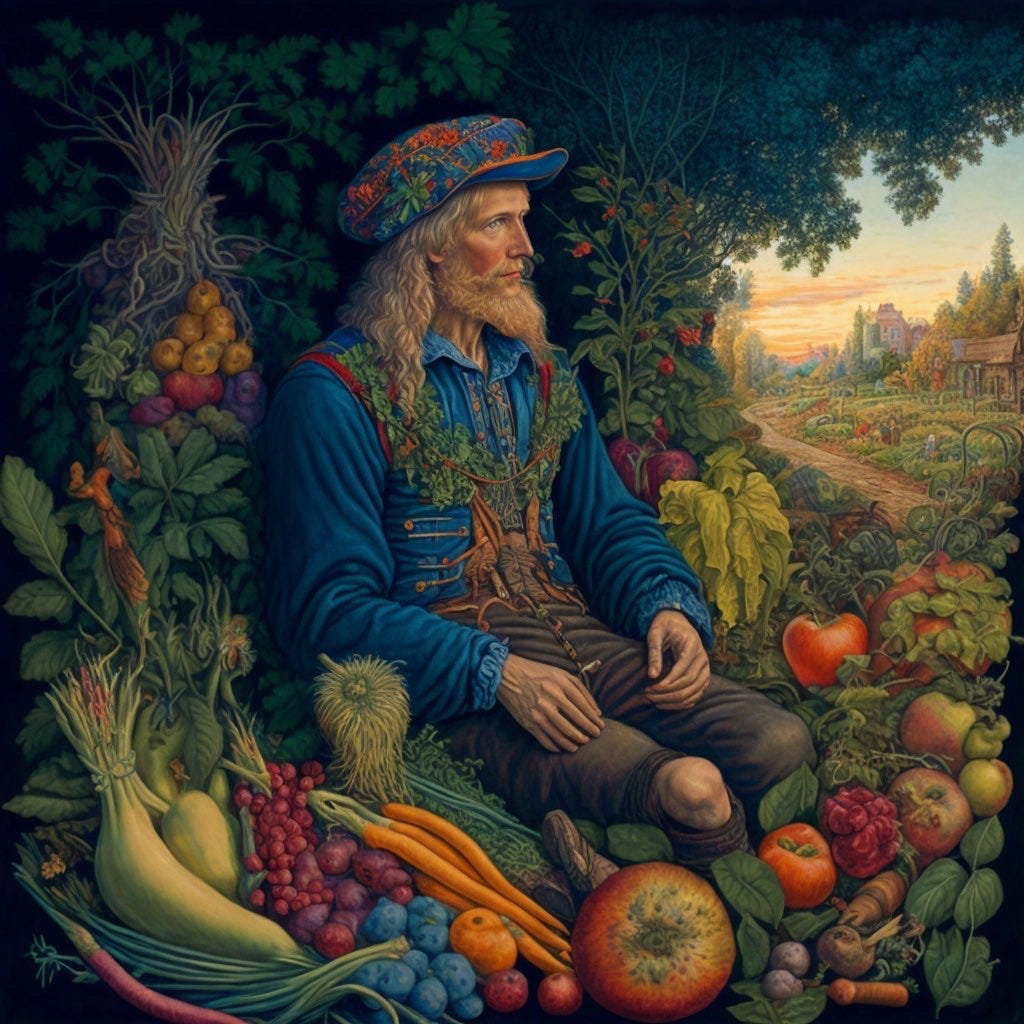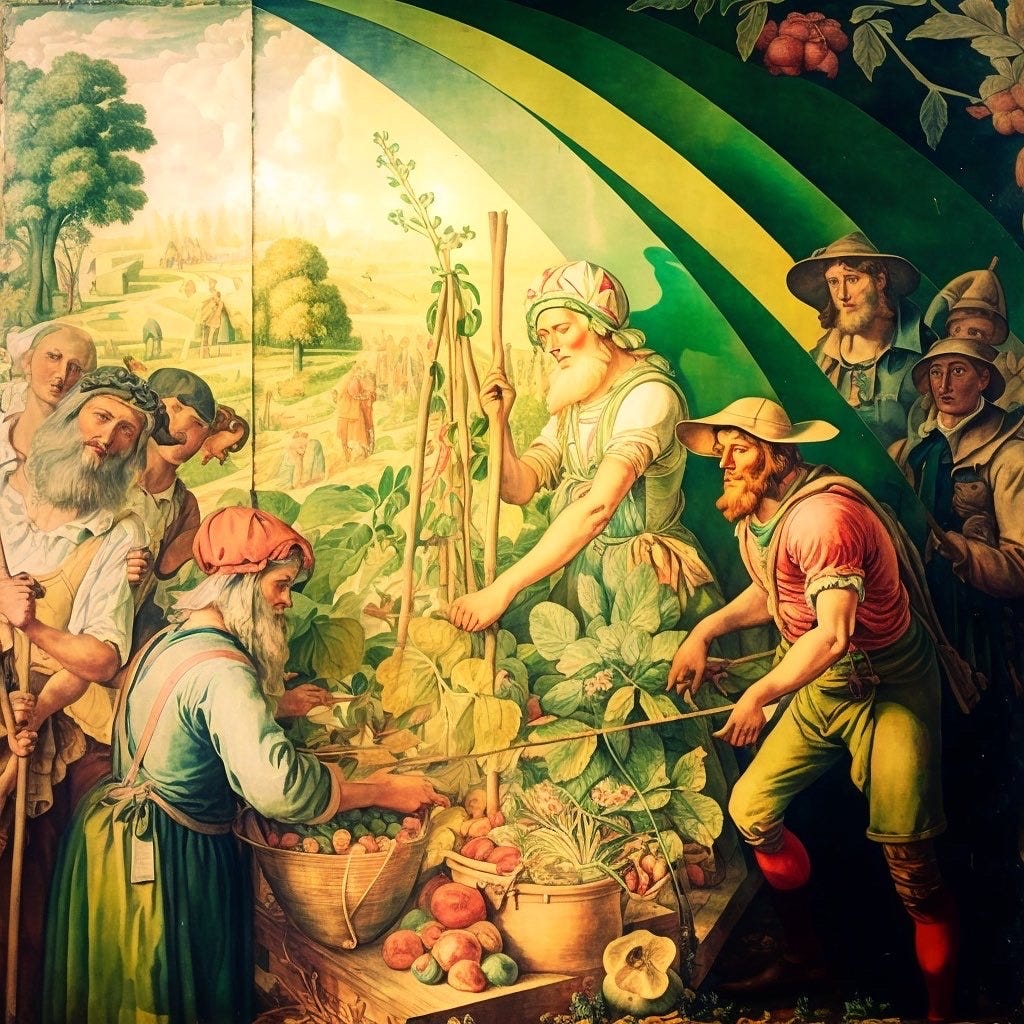This is the second in a series of postcards from the future, after humanity has completed a series of utopian mega-projects.
Wild Food Forests As Far As The Eye Can See
The Eastern hardwood forest had been in rough shape. Once covering most of North America east of the Mississippi, it had been almost entirely logged—repeatedly—and what was allowed to regrow was subjected to one abuse after another: industrial agriculture, urban sprawl, countless invasive species, and a rapidly warming climate that brought droughts and floods, fires and hurricanes, merciless pests and unpredictable weather. The rich forest that had supported human civilization for millennia was a shadow of its former self; the ecosystem had effectively collapsed.
That began to change with Restoration. The international initiative to rebuild the planet’s decimated ecosystems guaranteed employment to anyone who wanted it, and many did. Public universities across the globe collaborated on plant breeding, invasive species control schemes, and ecosystem redesign.
The result was a series of bioregional plans to not just restore habitats, but improve them, with an eye towards human subsistence. New cultivars of key native species were bred for resistance to diseases and pests, better resilience amidst climate chaos, and greater, more reliable yields for human uses.



